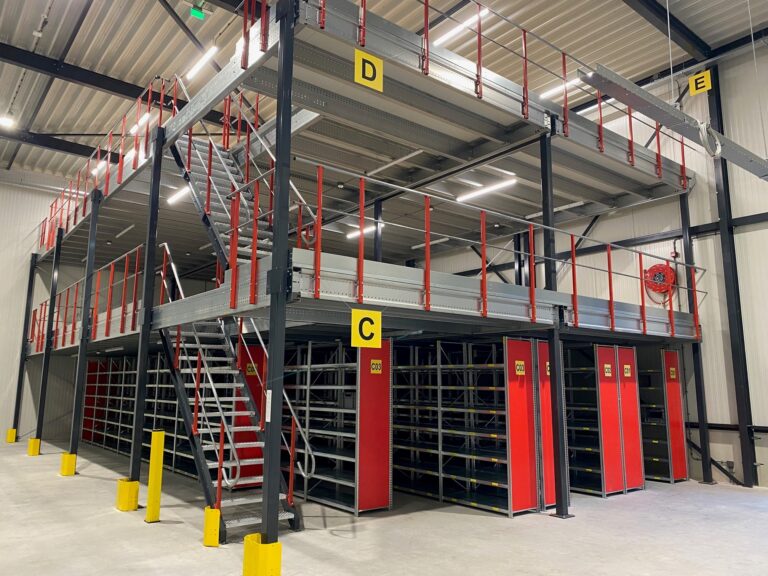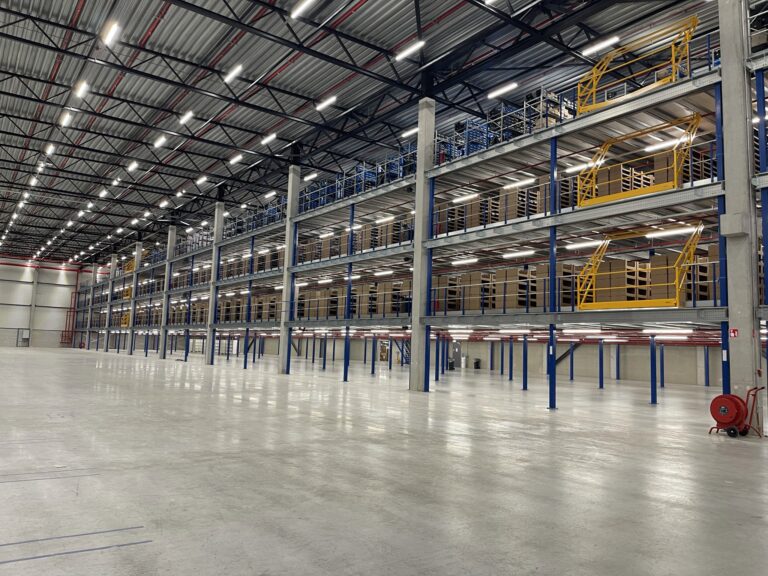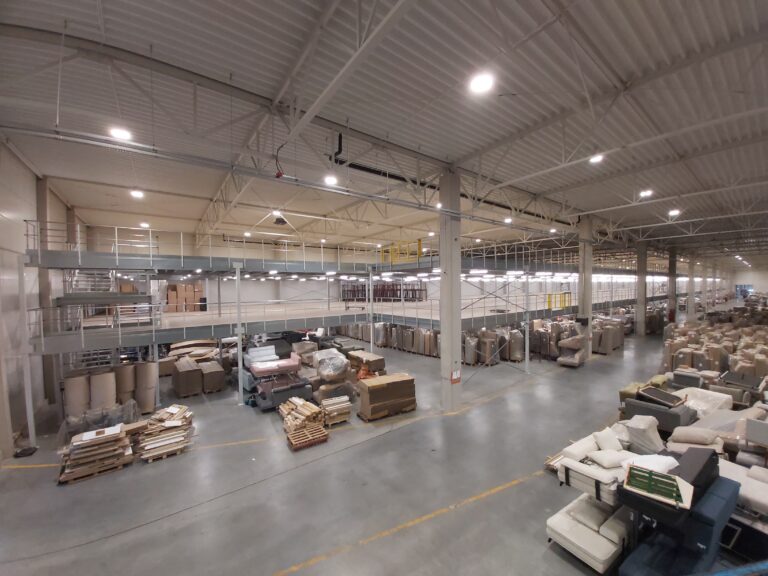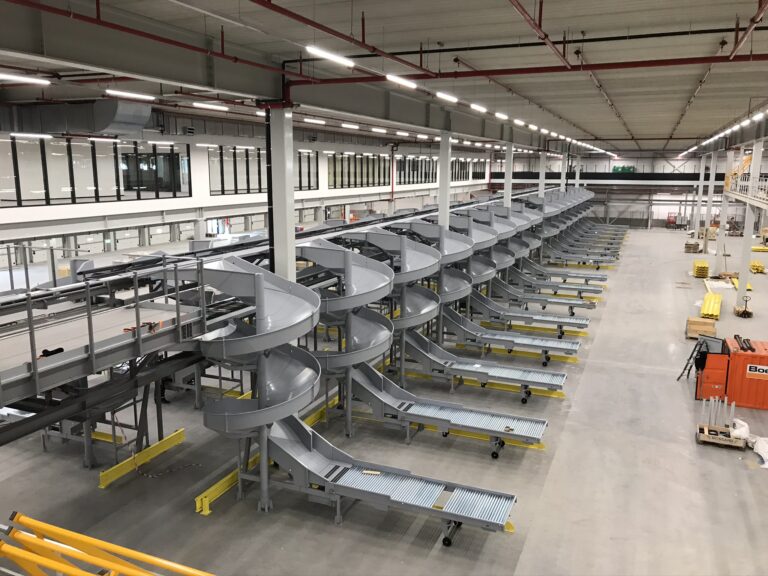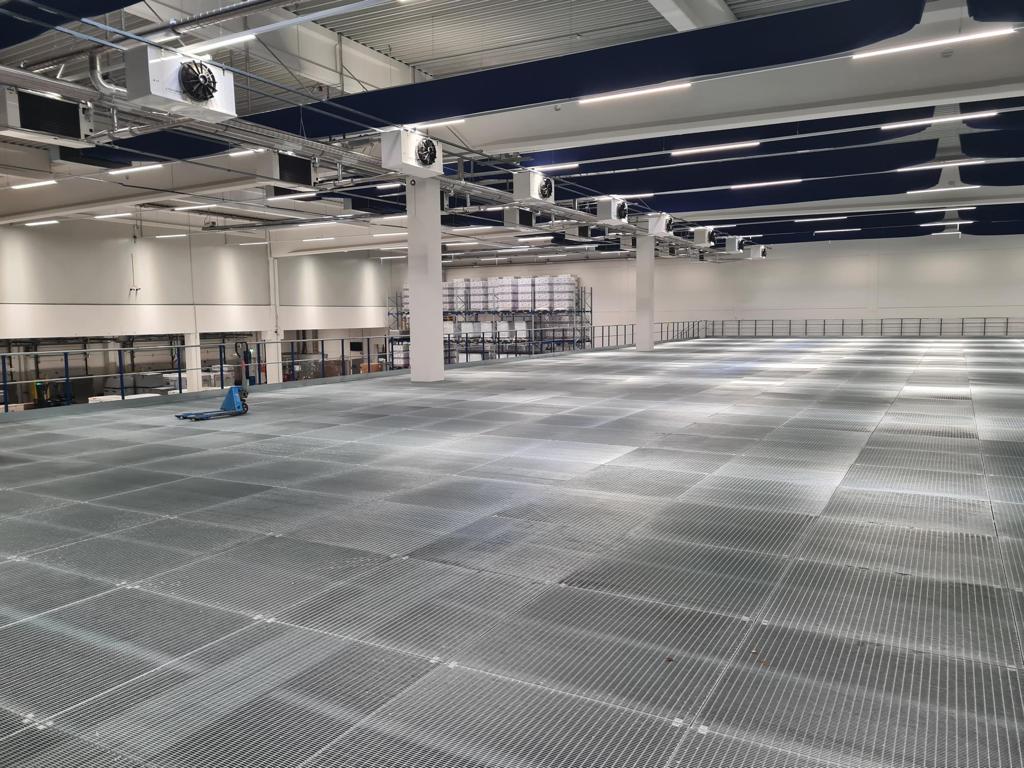
Which floor finish suits your mezzanine floor?
When designing a mezzanine floor, the floor finish is a decisive factor. The choice not only affects load capacity and safety but also comfort and usability. In this article we compare three commonly used finishes: wood, grating and concrete. This gives you a clear overview of the differences and helps you discover which floor finish best suits your situation.
Wooden floor finish: comfort and cost efficiency
Wood is a widely used finish for mezzanine floors. Chipboard panels of 38 mm are most common. This option is suitable for light to medium loads such as warehouses, order picking zones or office workplaces. The advantage of a wooden floor is that the material is lightweight, which also reduces steel construction costs. Wood is also relatively inexpensive per square metre and easy to replace or modify. In addition, it provides a cushioning effect for manual use, which is pleasant for employees.
There are also limitations. A wooden floor is less suitable for heavy point loads and can be sensitive to moisture, especially in loading and unloading areas or external access points. Fire resistance is a consideration, although this can be improved with additional treatments. Wood is mainly the right choice when comfort and budget are priorities and the load remains limited.
Why the choice of floor finish matters
The floor finish determines whether a mezzanine floor is suitable for light office activities, intensive order picking or heavy industrial loads. Factors such as load-bearing capacity, fire safety, acoustic comfort and maintenance play a role. A wrong choice can lead to higher costs or limitations in use, while the right finish contributes to efficiency and a longer lifespan.
Roostervloer: industrieel en onderhoudsarm
A grating floor consists of pressed or welded steel grates. This finish is strong and particularly suitable for industrial applications with heavy and evenly distributed loads. The open structure allows air, light and liquids to pass through, making grating floors effective in spaces with smoke extraction, sprinkler systems or ventilation requirements. The floor also requires little maintenance and is highly wear-resistant.
On the other hand, comfort is lower. A grating floor amplifies footstep and rolling noises and is not pleasant for long-term use. Small parts or wheels may get stuck in the openings. It is therefore not a solution for environments where people work on the floor continuously. Grating floors are ideal for industrial environments with heavy machinery or where fire safety requires extra attention.
Concrete floor: maximum load capacity and stability
For the heaviest applications a concrete floor finish offers the greatest certainty. This variant is constructed with hollow-core slabs or poured concrete on a steel structure. A concrete floor is suitable for permanent intermediate floors where heavy machines, racks or sensitive equipment need to be placed. The material is fire resistant, vibration-free, sound absorbing and very stable.
The downside is that concrete requires a high investment and a strong substructure. Construction time is also longer and a concrete floor cannot be dismantled. It is therefore a permanent solution but one that lasts for decades and provides maximum reliability.
Comparison of floor finishes at a glance
| Finish | Applications | Advantages | Disadvantages | When to choose |
|---|---|---|---|---|
| Wood | Warehouses, order picking zones, offices | Lightweight, affordable, sound absorbing, easy to replace | Moisture sensitive, lower fire resistance, unsuitable for heavy point loads | When comfort and price are priorities for light to medium loads |
| Grating (steel) | Industrial floors, technical areas | Very strong, open structure for air and liquids, wear-resistant | Loud walking noise, less comfortable, small parts may fall through | When ventilation, fire safety and heavy loads are key |
| Concrete | Heavy loads, machinery, permanent intermediate floors | Maximum load capacity, fire resistant, stable and vibration-free | Heavy, high cost, longer construction time, not demountable | When a structural and permanent solution is required |
Which floor finish suits your situation?
The best finish depends on your use and future plans. Wood is suitable for light applications where comfort and budget are central. A grating floor is ideal in industrial environments with fire safety and ventilation requirements. Concrete is the choice when you need a permanent solution with maximum load capacity and stability. Nolte Mezzanine helps you make the right choice and calculates what this means for your investment.
Get advice from Nolte Mezzanine
Would you like to know which floor finish best suits your mezzanine floor? Our specialists are happy to advise you. With more than 30 experts, over 20 years of experience and projects in 12 countries and 8 sectors we have the knowledge and practical experience to guide you in this choice. Contact us for a non-binding consultation and discover which floor finish is the most profitable for your company.
Frequently asked questions about floor finishes
Which floor finish is the most cost efficient?
Wood is often the most economical solution, especially for light to medium applications. The material is affordable, easy to replace and does not require a heavy substructure.
Which floor finish is the most fire safe?
A concrete floor offers the highest level of fire safety. Grating floors are also suitable in environments where smoke extraction or sprinklers are required.
Can I replace a floor finish later?
A wooden floor or grating floor can be replaced or adjusted relatively easily. A concrete floor is permanent and cannot be removed or replaced without major interventions.


